How Much Do Japanese Maple Trees Cost? 2025 Price Guide
-
Greg Iacono
- Last updated:

Are you looking for something that will set your yard apart from the rest in your neighborhood, create a focal point of interest, and increase your home’s curb appeal? If yes, look no further than the impressive and gorgeous Japanese Maple tree.
While there are over 1000 varieties of the Japanese Maple, most people think of Acer palmatum. More like a shrub than a real tree, the Japanese Maple offers beautiful color on its leaves and bark and creates even more brilliant colors during the fall.
Read on to find out everything you’ve always wanted to know about this eye-catching tree, including how much Japanese maple trees cost! To give you a short answer, the price always depends on the specific kind of tree and can range from $40 to $1,100 for the biggest trees.
The Significance of the Japanese Maple Tree
As much as they might look spectacular in your American yard, the Japanese Maple holds a special significance in Japan. Over the centuries, it has been featured in countless artworks, including paintings, poetry, haikus, and more. The Japanese view the maple as one of their most revered natural objects, symbolizing dignity, beauty, and elegance.
Every year in Japan, when the season changes and the colors of the Japanese Maple change with it, hundreds of thousands of people in the country head out to their national parks to see the spectacular show. This annual trek to see the changing leaves is similar to what happens in the United States every fall but with a higher reverence and significance. For many Japanese people, seeing the Japanese Maple is a way to commune or be one with nature.
Many famous paintings in Japan depict the falling of the Japanese Maple leaf as the main subject or place the tree prominently in the background. Several of these paintings’ significance goes toward how people live and the events that happen in their life. For example, leaves floating in a river represent how you must often take life as it comes or, as we say in America, “go with the flow.” Feeling like you’re stuck in a rut? If so, a painting of Japanese Maple leaves stuck in a ditch represents what you’re going through. In short, for the Japanese, the Japanese Maple is not only gorgeous but also a symbol of life and how we deal with it as humans.
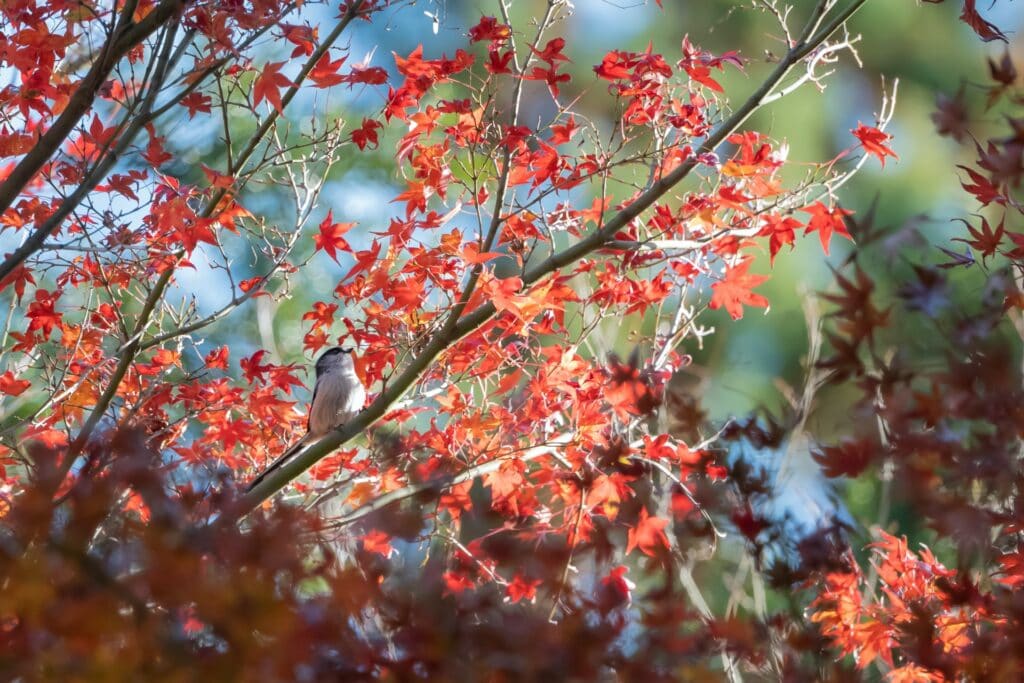
How Much Does a Japanese Maple Tree Cost?
The thing about Japanese Maple trees is that there is a massive variety of them, and some cost more than others. The price you pay for your particular Japanese Maple will depend on several factors, including how large it is when you purchase it, what type of Japanese Maple you purchase, and where you buy it.
Sometimes you’ll find Japanese Maples sold by size (3 feet, 6 feet, 10 feet, etc.), but if you buy a baby Japanese Maple tree, it will likely come in a gallon size from 1 to 5 gallons. Below is a chart of the various Japanese Maple trees and their approximate cost.
| Japanese Maple Variety | Price per Tree |
| Aratame Japanese Maple | $90 (2-gallon) |
| Bloodgood Japanese Maple | $40 (3-gallon)
$104 (3 to 4-foot tree) $400 (6-foot tree) $1,100 (10-foot tree) |
| Bonfire Japanese Maple | $90 (2-gallon) |
| Boskook Glory Japanese Maple | $90 (2-gallon) |
|
Butterfly Japanese Maple
Coral Bark Japanese Maple |
$75 (2 to 3-foot tree)
$75 (2 to 3-foot tree) $95 (3 to 4-foot tree) $600 (8-foot tree) |
| Crimson Queen Japanese Maple | $30 (1-to-2-foot tree)
$80 (2-to-3-foot tree) $140 (4-to-5-foot tree) |
| Emporer Japanese Maple | $70 (2 to 3-foot tree)
$100 (3-to-4-foot tree) |
| Ever Red Japanese Maple | $40 (3-gallon tree) |
| Fireglow Japanese Maple | $200 (7-foot tree) |
| Garnet Japanese Maple | $40 (3-gallon tree) |
| Green Cascade Japanese Maple | $90 (2-gallon tree) |
| Kiyohime Japanese Maple | $100 (2 to 3-foot tree) |
| Lace Leaf Japanese Maple | $85 (5-gallon tree) |
| Lion’s Head Japanese Maple | $40 (1-gallon tree) |
| Moonfire Japanese Maple | $150 (5-gallon tree) |
| Orangeola Japanese Maple | $80 (2 to 3-foot tree) |
| Osakazuki Japanese Maple | $115 (3 to 4-foot tree) |
| Purple Ghost Japanese Maple | $150 (5-gallon tree) |
| Red Japanese Maple | $40 (1-gallon tree) |
| Ryusen Japanese Maple | $40 (1-gallon tree) |
| Seiryu Japanese Maple | $80 (3 to 4-foot tree) |
| Shaina Japanese Maple | $85 (3-gallon tree) |
| Sherwood Flame Japanese Maple | $50 (1-gallon tree) |
| Shishigashira Lion’s Head Japanese Maple | $40 (1-gallon tree) |
| Tamekeyama Japanese Maple | $85 (2 to 3-foot tree) |
| Viridis Japanese Maple | $40 (3-gallon tree) |
Additional Costs To Anticipate
There aren’t a lot of additional costs when buying a Japanese Maple, but there are some. For example, to ensure that your new (and, as we’ve seen, expensive) tree survives the first season in your yard, it’s essential that the soil you plant it in is fully prepared and has plenty of organic material to feed the tree’s roots.
Also, depending on where you purchase your Japanese Maple and its size, there may be a fee for delivering it to your home. Typically, that’s around $50 but it could be higher if you live a long distance from where you purchase your tree(s).
Once your Japanese Maple has been planted, you’ll need to feed it with liquid fertilizer once a month for at least a year and then two or three times annually. Lastly, depending on your knowledge and DIY gardening skills, you might need a landscaper or arborist to come to your home and plant your Japanese Maple. This cost can run between $50 and $100 per tree, although the more trees you have planted, the less it should cost.
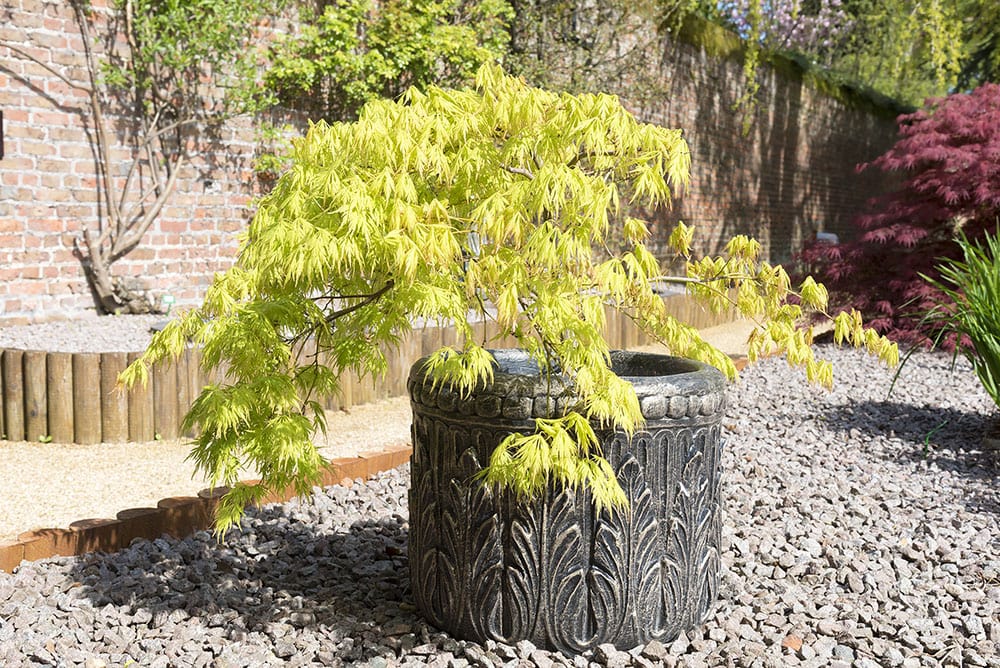
How Often Should I Prune a Japanese Maple Tree?
Pruning a Japanese Maple should always be done with care lest you prune too much and damage or kill your tree. As with planting a Japanese Maple, if your DIY gardening skills are lacking, it might be best to have a landscaper, arborist, or lawn care company take care of it for you. Let the specialist do it once but watch closely and ask questions so that you can do it yourself in the future.
If you’re confident in your gardening skills, you’ll be glad to know you can trim branches off your Japanese Maple any time of year, as long as you don’t trim too many. Make sure your shears are nice and sharp so they make a clean cut.
If your goal is to reshape your Japanese Maple completely, experts recommend pruning it in winter when it has no leaves. That way, you can better see the shape, and in spring, your Japanese Maple (s) will grow back strong and sturdy. Besides that, pruning a Japanese Maple is relatively easy, especially since they aren’t large trees.
Does Home Insurance Cover the Loss of a Japanese Maple Tree?
Although Japanese Maple trees are sturdy and strong, they can still become uprooted, damaged, or even destroyed if forced to endure an intense storm like a hurricane or tornado.
Many people ask if their homeowner’s insurance covers their Japanese Maple(s) if that happens, which is a good question considering their cost and significance. Sadly, most insurance policies don’t cover the loss of any trees from a storm.
There is, however, one scenario where your insurance might cover your Japanese Maple. It’s called “covered peril,” and it includes damage from fire, lightning, theft, and vandalism. It might also cover your tree if someone runs into it and damages or kills it with their vehicle.
Some insurance companies will pay a certain amount per tree to replace them in these situations. Aside from these particular situations, the likelihood that your insurance covers damage or destruction of your Japanese Maple tree(s) is very low.
What To Do for Your Japanese Maple Tree Between Seasons?
While there’s not much you need to do to your Japanese Maple during spring, summer, and fall, you should do a few things as winter approaches. Also, there are some things you should do when planting so that your lovely tree(s) survive the winter with no problems.
Choose a Good Planting Site
A spot for your Japanese Maple tree protected from the wind provides a little warmth. Near your home is a good idea, also, although not too close if it snows a lot where you live. If it does, and your Japanese Maple is too close, a large amount of snow from your roof could damage it badly.
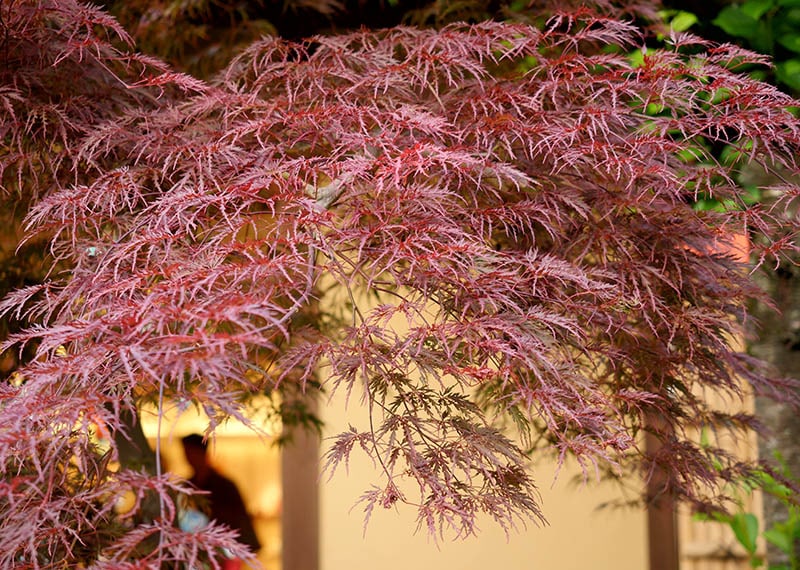
Watering Your Japanese Maple in Winter
The biggest problem with watering your Japanese Maple in winter is that if you overwater them, the roots can begin to rot. You want to avoid that at all costs, so be sure only to water your trees when the ground is dry. Also, remember that Japanese Maples, like most trees, don’t need nearly as much water in winter as they do in spring and summer.
Before the Ground Freezes, Water Your Japanese Maple Heavily
Depending on where you live, rainfall in the fall might be intense or might not be. You should be all set if your yard has received plenty of rain and the ground is sufficiently wet. If not, you should water your Japanese Maple well before the first freeze.
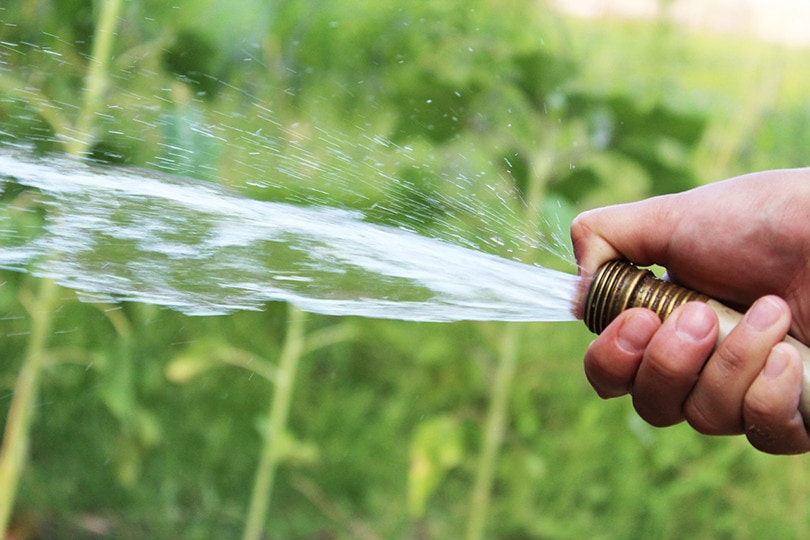
Wrap Your Trees With Burlap before Winter
When your Japanese Maple is young (the first 3 to 4 years), you should wrap the base of it with burlap before winter sets in. This will protect it well and ensure the roots are not damaged badly by the cold.
Fertilize 2 Months before the 1st Frost
Fertilizing your Japanese Maple is essential, but you don’t want to do it too late in the season. Experts suggest fertilizing your tree for the last time about 2 months before the expected first frost, give or take a few days. The next time you fertilize your trees after that should be in spring once the ground has started thawing.
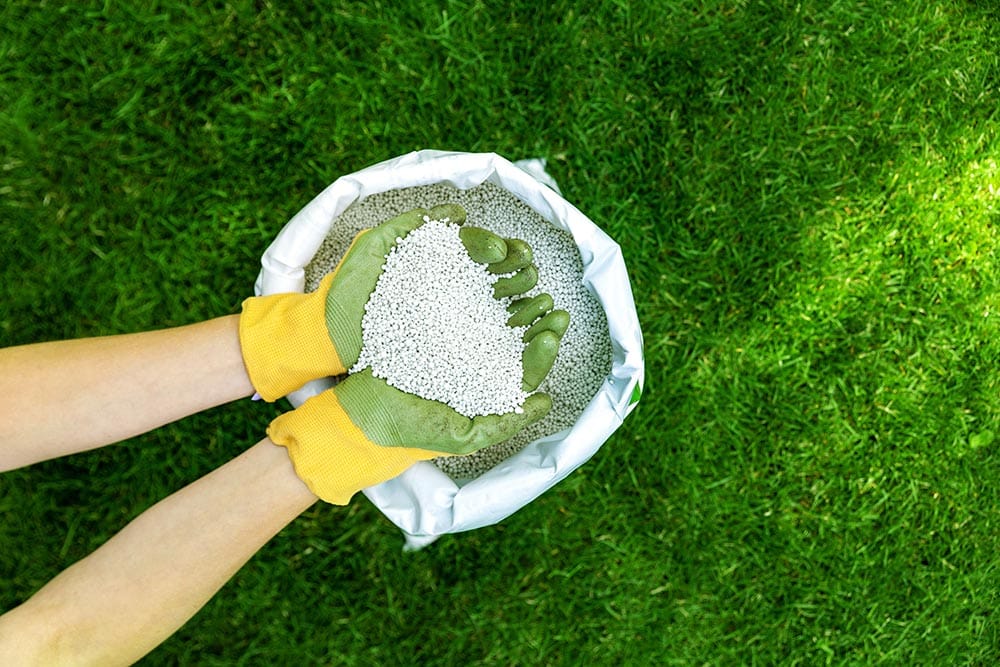
Insulate Your Japanese Maple Roots With Mulch
Along with wrapping it in burlap, you should put down a layer of mulch about 3 to 4 inches deep around the base of your Japanese Maple. This will protect their delicate roots and keep any damage they suffer from the cold down to a minimum.
You’ll want to spread the mulch to what’s known as the “drip line.” That’s where the outermost branches of your maple tree extend (and thus drip water when it’s raining).
For Potted Japanese Maples, Bring Them Inside When Temps Fall Below 30℉
Bringing your Japanese maples into your garage, shed, or barn when temperatures fall below 30℉ regularly is recommended. This won’t be necessary if you live where it doesn’t freeze often, but if it does, it can save your precious trees.
Also, when bringing them back outside in spring, be careful not to expose them to too much sun right away. This can burn their delicate leaves and should be avoided. A spot with 3 or 4 hours of sunshine a day will be best for the first week or two.
Final Thoughts
Japanese Maple trees are one of the loveliest species and come in various colors, sizes, and shapes. Whichever type of Japanese Maple you choose, you’ll have a beautiful tree or several of them that will set your yard apart from your neighbors and be a point of interest that few will miss.
While they are relatively expensive compared to many other trees, many homeowners believe Japanese Maples are worth the extra cost due to their beauty, grace, and elegant look. We wish you the best of luck and hope that the tree gives you years of joy and gorgeous color.
Featured Image Credit: Stefan Schweihofer, Pixabay
Contents
